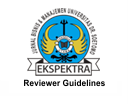Analysis of the Influence of Brand Image and Brand Trust on Purchasing Decisions through Brand Loyalty (Study on Lapis Kukus Pahlawan Bread)
 Abstract views: 902
,
Abstract views: 902
,
 PDF downloads: 860
PDF downloads: 860
Abstract
Competition between the food and beverage industry, especially local souvenirs, is a challenge for every business actor to be able to maintain and develop his business. Repurchase decision is the stage where consumers form the intention to buy the most preferred product, where the consumer's decision to modify, delay or avoid is strongly influenced by the perceived purchase risk (Kotler and Keller, 2012: 188).
Brand image can influence consumer behavior in buying a product. Brand image has an important position in buying behavior. Because one of the decisions in the purchase structure is a decision regarding the brand. Trust involves a person's willingness to behave in a certain way because of the belief that his partner will give what he hopes and a hope that is generally owned by someone that the words, promises or statements of others can be trusted (Daryanto, 2013: 279).
Brand trust is one's belief in certain values that will influence behavior (Peter and Olson, 2013: 136). Brand loyalty reflects brand loyalty to certain brands. Brand loyalty is a condition where consumers have a positive attitude towards the brand, have a commitment to the brand, and have a tendency to continue their purchases in the future.
Along with the development of the bread industry in Indonesia, there are also more players in the bread business so that competition in this market is getting tougher. The tight competition in the bread business can be seen from a number of bread business players in Indonesia, including bread with the brand Sari Roti, Lauw, Sharon, BreadTalk, Holland Bakery, and many more including the Lapis Kukus Pahlawan Bread. This study aims to analyze the effect of brand image and brand trust on purchasing decisions of the Lapis Kukus Pahlawan bread through brand loyalty.
References
Anastasia, Sabrina Sihombing. 2015. Peran Kepercayaan Merek, Kepuasan Merek, dan Komitmen dalam Memprediksi Loyalitas Pelanggan. Universitas Pelita Harapan, Indonesia. Tangerang.
Chaudhuri, A. and Holbrook, M.B. (2001). "The chain of effects from brand trust and brand affect to brand performance: the role of brand loyalty". Journal of Marketing, 65, 81-94.
Delgado, B., Elena, dan Jose. (1999). Brand trust in the context of consumer loyalty. European Journal of Marketing, 35(11/12), pp. 1238-1258
Ferrinadewi, Erna. 2008. Pengaruh Threat Emotion Konsumen dan Brand Trust pada Keputusan Pembelian Produk Susu Anlene di Surabaya. Skripsi. Universitas Kristen Petra
Ferdinand, Augusty. 2006. Metode Penelitian Manajemen: Pedoman Penelitian untuk Penulisan Skripsi, Thesis dan Disertasi Ilmu Manajemen, Badan Penerbit Universitas Diponegoro, Semarang.
Fransisca, Cindy Tingkir. (2014). “Pengaruh Identitas Merek Terhadap Loyalitas Merek Melalui Citra Merek Dan Kepercayaan Merek Toyota”. Jurnal Manajemen Pemasaran, Vol. 8, No. 2, Oktober 2014 Doi: 10.9744/Pemasaran.8.2.62-69 ISSN 1907-235x.
Gecti, F. dan Zengin, H. (2013). The relationship between Brand Trust, Brand Affect, Attitudinal Loyalty and Behavioeral Loyalty: A Field Study towards Sports Shoe Consumers in Turkey. International Journal of Marketing Studies.Vol.5, No. 2.
Ghozali, Imam. 2011. Aplikasi Analisis Multivariate Dengan Program IBM SPSS 19 (edisi kelima). Semarang: Universitas Diponegoro.
Haijun, W. (2014). The role of brand affect and brand trust in the formation of brand loyalty. Journal of Chemical and Pharmaceutical Research. Vol.6, No.6.
Hair, J.F., Anderson,R.E., Tatham, R.L., dan Black,W.C. (1998), Multivariate Data Analysis, New Jersey : Prentice – Hall.
Ika, Nuruni dan Kustini. 2011. Experiental Marketing, Emotional Branding, and Brand Trust and their Effect on Loyalty on Honda Motorcycle Product. Journal of Economics, Business, and Accountancy Ventura, Vol. 14, No. 1, April 2011, pp. 19-28.
Jasfar, Farida. 2012. Teori dan Aplikasi Sembilan Kunci keberhasilan Bisnis jasa. Jakarta. Salemba Empat.
Keller, K.L. (1993, January). Conceptualizing, Measuring, and Managing Customer-Based Brand Equity. Journal of Marketing. 57, 1-22.
Keller, Kevin Lane. 1998. Strategic Brand Management, Building, Measuring, and Managing Brand Equity. New Jersey : Prentice Hall
Kotler, P., dan Pfoertsch, W. (2008). B2B Brand Management. Jakarta: PT. Bhuana Ilmu Populer. Malhotra, N.K. (2012). Marketing research: inte-gration of social media (4th ed). London: Orien-tation Prentice Hall.
Kotler, Philip and Kevin Lane Keller. 2009. Manajemen Pemasaran. Penerjemah B.Molan. Jilid 1. Edisi Ketiga Belas. Jakarta: PT Indeks Kelompok Gramedia.
Kotler, P., & Armstrong, G. 2010. Principles of Marketing, thirteen edition. Prentice Hall. New Jersey.
Lau, Geok Theng dan Lee, Sook Han, 1999, Consumer Trust in Brand and The Link to Brand Loyalty, Journal of Market Focused Management, Vol 4.
Musay, F. P. 2013. Pengaruh Brand Image Terhadap Keputusan Pembelian. Jurnal Aministrasi Bisnis, 3(2), pp: 1-7.
J. Preacher Kristopher Dan Andrew F. Hayes. 2004. SPSS And SAS Procedures For Estimating Indirect Effects In Simple Mediation Models. Behavior Research Methods, Instruments, and Computers. Copyright 2004 Psychonomic Society, Inc.
Rizan et al . (2012). “Pengaruh brand image dan brand trust terhadap brand loyalty teh botol sosro”. Jurnal Riset Manajemen Sains Indonesia. Jakarta Universitas Negeri Jakarta.
Ryan, Natalie Ann, In Brands We Trust, International Business Master Thesis No.2002 : 4. Schiffman, Leon G. And Leslie L. Kanuk. 2000. Consumer Behavior. Fifth Edition, PrenticeHall Inc. New Jersey
Copyright (c) 2021 Ekspektra : Jurnal Bisnis dan Manajemen

This work is licensed under a Creative Commons Attribution-NonCommercial-ShareAlike 4.0 International License.
Ekspektra : Jurnal Bisnis dan Manajemenis licensed under a Creative Commons Attribution-ShareAlike 4.0 International License.























